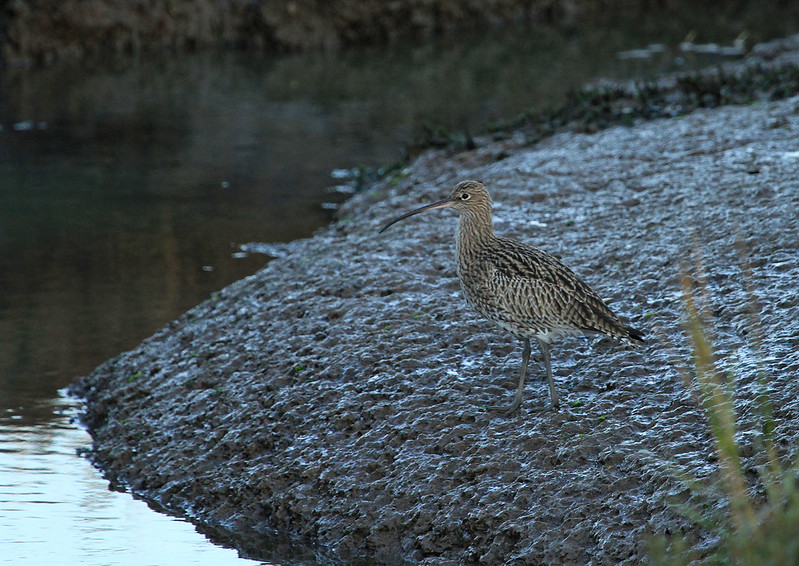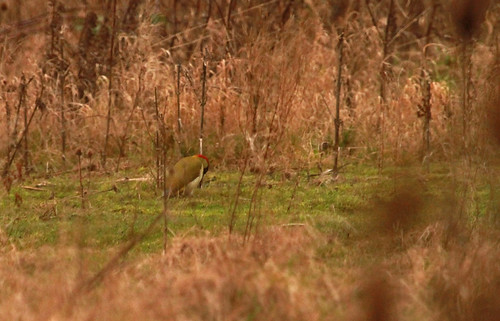RSPB Titchwell Marsh is a reserve I’ve posted about several times before and it’s a great place to get close to a lot of bird species. It’s on the north Norfolk coast and it includes various habitats from woodland scrub to fresh water lakes, reedbeds, salt marsh and the BIG beaches that make that part of the country so spectacular. It’s home to bearded tits, which I didn’t see on this visit in November last year, but I saw many other species of goose, duck, wader etc.

The increasingly elusive curlew – Numenius arquata
The curlew is Europe’s biggest wader, with it’s very long downturned beak and distinctive call it’s easy to recognise. Alas, as with so many other species it’s endangered in the UK with big losses in numbers, approximately 80% decline in the last 50 years or so, due to habitat loss. The east coast of the UK is a globally important feeding and overwintering station for migrating birds, and there’s increasing realisation of the importance of protecting it as climate change threatens to encroach and flood low lying coastal areas. To mitigate against that, there are initiatives underway in East Anglia to allow the sea to reclaim tidal land which will provide a buffer against the potentially catastrophic flooding that rising sea levels could bring, as well as providing huge amounts of habitat for the creatures that rely on these tidal mudflats. I hope that projects like the one to create habitat using the spoil from the London Crossrail development at Wallasea Island in Essex will help to redress the balance and enable stabilisaton and even increases in populations of the visitors that rely on it for sustenance during their arduous journeys.


Another wader which was present in numbers at Titchwell was the bar tailed godwit:

Bar tailed godwit – Limosa lapponica – showing it’s magnificently long beak
The bar tailed godwit, like the curlew, is also one of the bigger waders with a very long beak, but in the case of the godwit the beak isn’t curved downwards and it has a pink root extending a long way along it’s length. The tip of a godwits beak is also prehensile, enabling it to better find it’s prey of shellfish, snails and worms buried deep in the mud of it’s coastal habitat. They breed in the summer in the high Arctic and head south in the autumn to feeding grounds that include the UK coasts and the British Trust for Ornithology estimate a population of 30,000 individuals.

A pair of bar tailed godwit
The bar tailed godwit is an amazing bird and in 2020 a youngster broke the record for the longest recorded non-stop flight when it migrated from Alaska to New Zealand in one hop – a flight of approximately 12,200km (7,625 miles)! It’s well adapted for long distance travel, with long, pointed wings and the ability to store a lot of energy and the whole journey took 11 days at speeds up to 88km/hr (55mph). It’s a phenomenal feat of endurance and navigation.

 Green woodpecker (Picus viridis, Dansk: grønspætte) mining ants next to the car park at Fen Drayton lakes and fastidiously refusing to look up
Green woodpecker (Picus viridis, Dansk: grønspætte) mining ants next to the car park at Fen Drayton lakes and fastidiously refusing to look up Great spotted woodpecker (Dendrocops major, Dansk: stor flagspætte) patrolling the treetops
Great spotted woodpecker (Dendrocops major, Dansk: stor flagspætte) patrolling the treetops A small fraction of a much bigger flock of lapwing, I make it 84 in this group
A small fraction of a much bigger flock of lapwing, I make it 84 in this group A blue tit deftly plucking seeds from a swaying reed seedhead
A blue tit deftly plucking seeds from a swaying reed seedhead Goldeneye drake – elegance personified
Goldeneye drake – elegance personified

